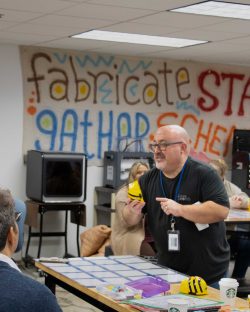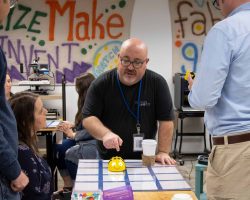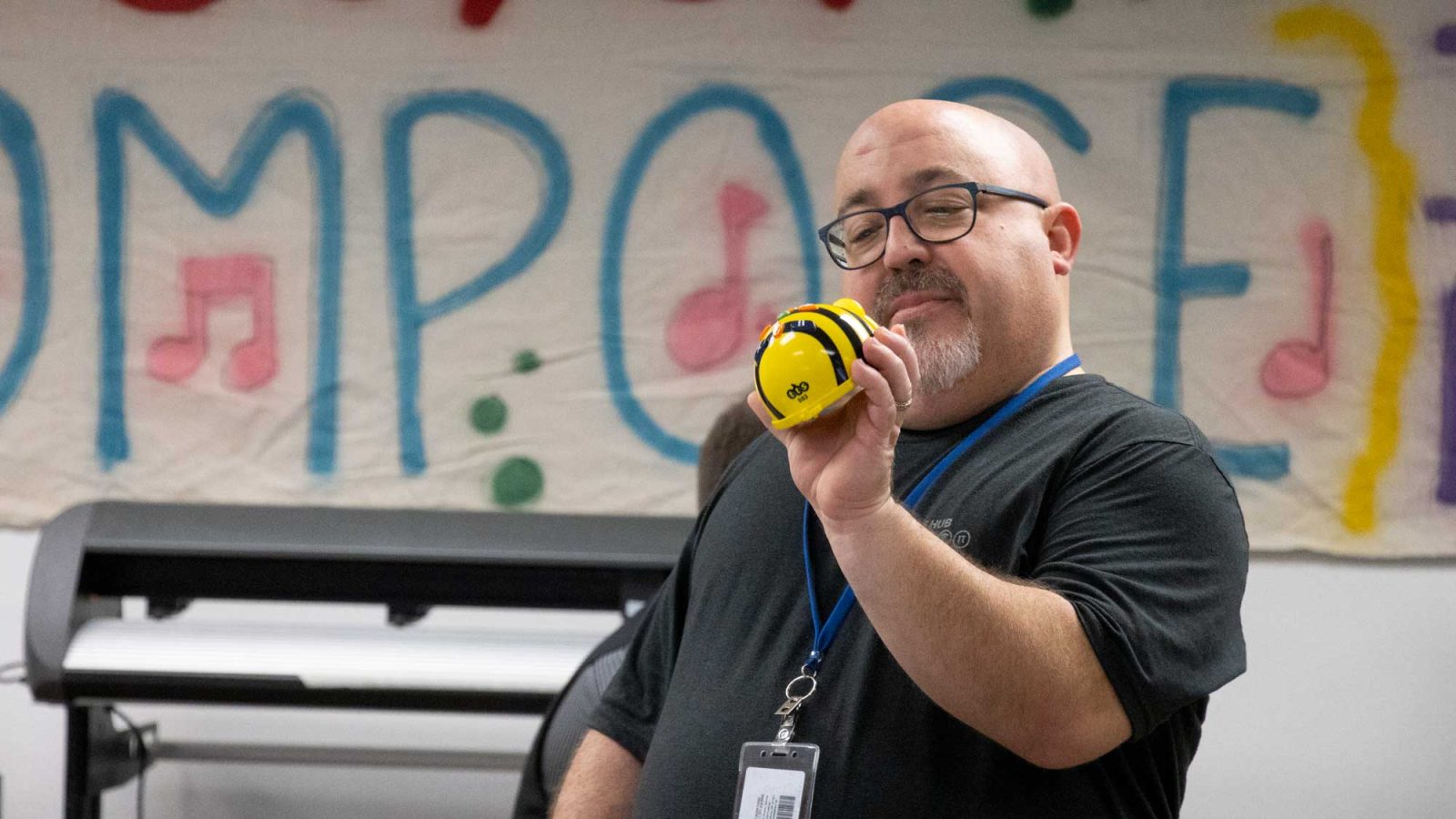How do you program a circle? Standing in the middle of his audience, Chris Singer uses his body to demonstrate how to teach young students to program a BeeBot to drive in a circle using the program’s algorithmic language.
Programming staff from the network of STEM hubs across Oregon met at MVSCH’s new makerspace, the MILL, during the tail end of January 2023. MVSCH’s lead program coordinator, Chris Singer, charismatically commanded the attention of his colleagues as he detailed what they were about to cover in their BeeBots training
The BeeBot initiative came out of the STEM Hub Network’s Computer Science/Digital Literacy (CS/DL) innovation grant funding from the Oregon Department of Education. This grant is meant to help fund public school CS/DL supplementary programming by bringing more CS/DL experiential learning to students, increasing professional development opportunities for educators, and increasing engagement of computer science industry partners.
Singer has led the network in the effort to bring CS/DL to early elementary audiences through the use of BeeBots as an approachable programming implement for K-2 students. Given the educational tool’s versatility and easy-to-use operating system, Singer has backed this program as the right tool for the job.
“It’s not only about computer science for young students. They get social and emotional learning out of it; they are made to work together and take turns,” Singer said when explaining the group activity approach used in this method.
In the training, Singer trains the network on more than just how to operate the BeeBots. Some of the topics discussed were: how to effectively teach algorithms, introducing language around coding to young students, and some constructive ways to use BeeBots with various age groups. Singer explains how to use the concept of peanut butter and jelly sandwiches to teach the basics of algorithms; a method that helps students visualize how algorithms work and are created.

By providing K-2 students with foundational computer science and digital literacy skills we are empowering them to approach future tech learning opportunities in their education with excitement and curiosity. This programming is aimed to create a more equitable learning environment for students in Oregon and, ultimately, a more equitably prosperous Oregon.


